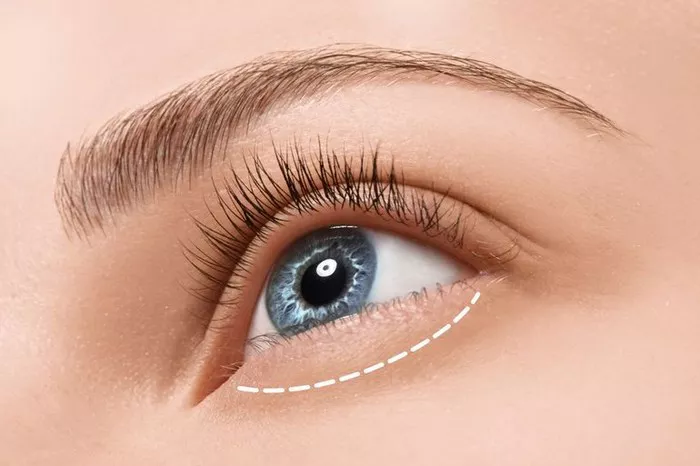Drooping eyelids, medically known as ptosis, can not only affect a person’s appearance but also lead to functional problems like impaired vision. Fortunately, there are effective surgical procedures available to correct this condition and restore the natural look and functionality of the eyes. In this article, we will delve into the details of the surgical procedure used to repair drooping eyelids, exploring the different techniques, risks, and benefits associated with this type of surgery.
1. Understanding Ptosis
Ptosis occurs when the muscles responsible for lifting the eyelids weaken or malfunction, causing the upper eyelids to sag. This can be present at birth (congenital ptosis) or develop later in life due to aging, injury, or other medical conditions. The severity of ptosis can vary, with some cases causing minimal obstruction to vision, while others significantly affecting eyesight.
2. Who is a Candidate for Ptosis Repair Surgery?
Individuals experiencing the following symptoms or conditions may be suitable candidates for eyelid ptosis repair surgery:
Noticeable drooping of one or both eyelids.
Impaired vision due to the drooping eyelids.
Frustration or self-consciousness about the appearance of drooping eyelids.
Absence of any eye health issues that could complicate surgery.
Realistic expectations about the outcome of the procedure.
A thorough examination and evaluation by an experienced ophthalmologist or oculoplastic surgeon are crucial to determine a patient’s eligibility for ptosis repair surgery.
3. Pre-operative Preparations
Before proceeding with the surgery, patients will undergo a series of pre-operative preparations, which include:
Complete eye examination: This involves assessing visual acuity, eye movement, and the severity of ptosis.
Medical history review: The surgeon will inquire about past eye conditions, surgeries, allergies, and medications.
Photography: Pre-operative photographs will be taken to document the existing condition and serve as a reference for the surgical plan.
Discussion of expectations: The surgeon will explain the potential outcomes and address any concerns or questions the patient may have.
4. Surgical Techniques
Several surgical techniques can be employed to repair drooping eyelids, depending on the underlying cause, severity, and desired outcome. The most common methods are:
Levator Resection: This technique involves shortening and tightening the levator muscle responsible for lifting the eyelid. The surgeon makes an incision in the eyelid crease to access and adjust the muscle, allowing for improved eyelid elevation.
Müller Muscle Conjunctival Resection (MMCR): Suitable for cases of mild to moderate ptosis, this procedure involves tightening the Müller muscle and conjunctiva, which are located in the inner aspect of the eyelid. As the incision is made inside the eyelid, there is no visible scar.
Frontalis Sling Surgery: When the levator muscle is severely weakened or damaged, a frontalis sling may be used. In this procedure, a small synthetic material or the patient’s tendon is attached to the forehead muscles, enabling them to lift the eyelids.
Blepharoplasty: For individuals with both ptosis and excess eyelid skin, a combination of ptosis repair and blepharoplasty (eyelid lift) may be recommended. Blepharoplasty involves removing excess skin and fat from the eyelids, creating a more youthful appearance.
5. The Surgical Procedure
Before the surgery, the patient is administered local anesthesia to numb the area or general anesthesia if deemed necessary. The chosen surgical technique will dictate the specifics of the procedure, but generally, the following steps are followed:
Incision Placement: The surgeon carefully marks the incision site, considering factors like eyelid crease position and the desired amount of lift. Incisions are typically made in inconspicuous areas to minimize visible scarring.
Muscle Adjustment: The levator muscle or Müller muscle, depending on the technique, is meticulously adjusted to achieve the desired eyelid height. The surgeon aims to create symmetry between both eyes.
Suture Placement: Sutures are used to secure the muscles in their new position and close the incisions. Dissolvable sutures are often preferred to avoid the need for suture removal.
Post-operative Dressing: The surgeon may apply a light dressing or ointment to protect the eyes and aid in the healing process.
6. Recovery and Post-operative Care
After the surgery, the patient will need to follow specific post-operative care instructions provided by the surgeon. These may include:
Applying cold compresses to reduce swelling and bruising.
Using prescribed eye drops to prevent infection and keep the eyes lubricated.
Avoiding strenuous activities and heavy lifting for a few weeks.
Sleeping with the head elevated to minimize swelling.
Wearing sunglasses to protect the eyes from sunlight and dust.
Patients should attend follow-up appointments as scheduled to monitor the healing process and address any concerns.
7. Risks and Complications
While eyelid ptosis repair surgery is generally safe and effective, like any surgical procedure, it carries some risks and potential complications, including:
Infection at the incision site.
Excessive bleeding or hematoma formation.
Asymmetry between the eyes.
Overcorrection or undercorrection of ptosis.
Visible scarring (rare with skilled surgeons).
Temporary or permanent dryness of the eyes.
Patients must be aware of these risks and discuss them thoroughly with their surgeon before making an informed decision.
8. Conclusion
Surgical procedures to repair drooping eyelids offer a promising solution for individuals struggling with functional or aesthetic issues caused by ptosis. With the advancements in oculoplastic surgery and the expertise of qualified surgeons, patients can regain their natural eyelid position and experience improved vision and self-confidence. If you or someone you know is dealing with drooping eyelids, consult with a certified oculoplastic surgeon to explore the suitable options for ptosis repair surgery. Remember that every case is unique, and the most appropriate technique will depend on individual needs and expectations.


